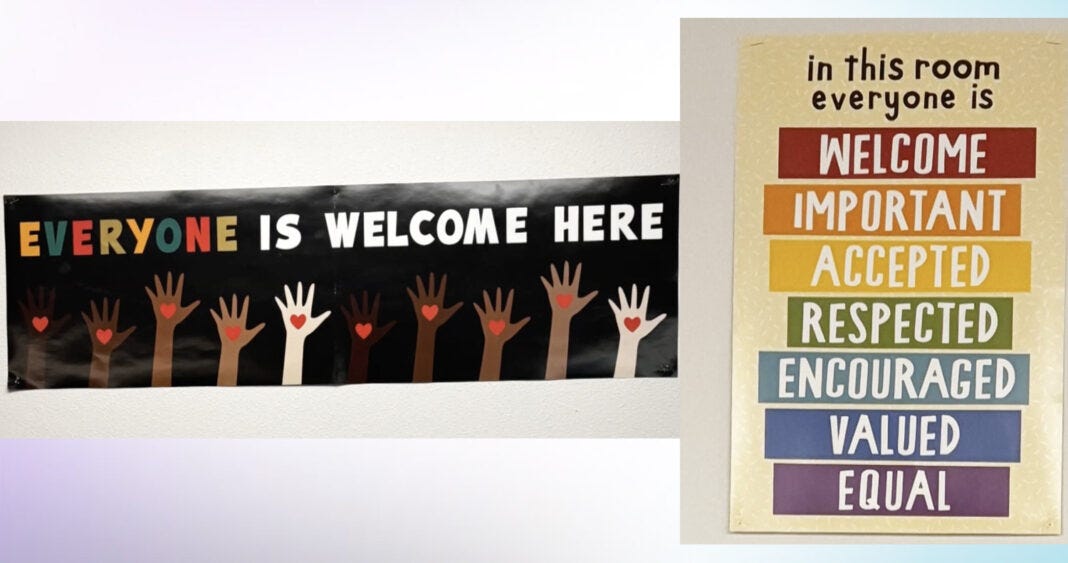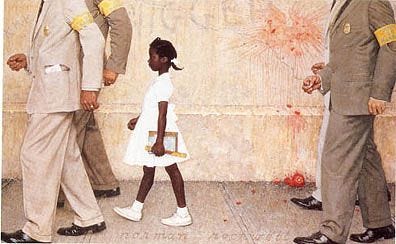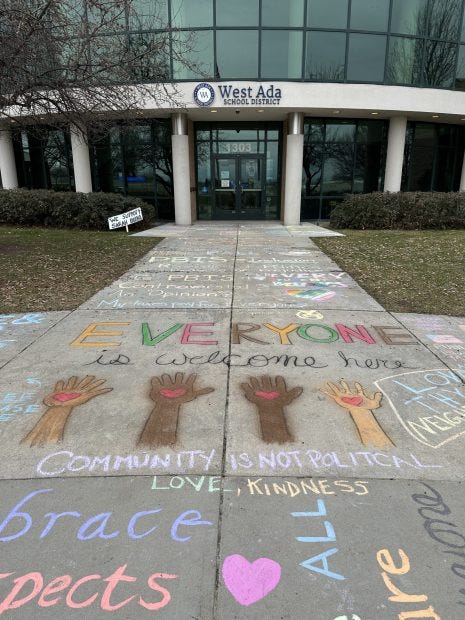- Scholastic Alchemy
- Posts
- What's the alternative?
What's the alternative?
If every kid doesn't deserve a chance, who does?
Welcome to Scholastic Alchemy! I’m James and I write mostly about education. I find it fascinating and at the same time maddening. Scholastic Alchemy is my attempt to make sense of and explain the perpetual oddities around education, as well as to share my thoughts on related topics. On Wednesdays I post a long-ish dive into a topic of my choosing. On Fridays I post some links I’ve encountered that week and some commentary about what I’m sharing. Scholastic Alchemy will remain free for the foreseeable future but if you like my work and want to support me, please consider a paid subscription. If you have objections to Substack as a platform, I maintain a parallel version using BeeHiiv and you can subscribe there.
I’m still playing with the newsletter to see what cadence and topics I want to address. Much of what I wrote about starting in January felt like stuff I just needed to get off my chest. What I’m thinking about now is often a bit more future-oriented. What does education, especially K-12, look like over the next decade or so? Next week I plan to write about Educational Pluralism, an idea positioned to be a new compromise between (some) conservatives and liberals whereby the government would fund all kinds of schools directly (as opposed to money-follows-kid vouchers) but hold strict standards that schools must maintain to qualify for that funding. I think it’s an idea worth taking seriously even though I also have my complaints about its feasibility. Today, though, I want to point to some other writers and events that support some of what I’ve been saying about the nature of the new regime’s school reform agenda.
Inclusion and belonging are “bad” now
I don’t know another way to put it other than to say that schools are following our federal leadership down a dark path. Sometimes it’s not even very subtle. Sometimes simply indicating all students are welcome in your classroom is against the rules. The idea that everyone belongs, regardless of race, religion, creed, gender, or ability is being challenged from the top down. I’ve recently come across some quality reporting by BoiseDev and Idaho Ed News about the dismissal of 6th grade world civilizations teacher, Sarah Inama. I highly recommend three pieces for background. First, a report by BoiseDev about the initial request by the school district to remove two signs from Inama’s classroom. Second and third are reports on over 1200 district emails obtained under a FOIA request detailing the district’s attempt to craft a response to local uproar. I don’t think I have anything meaningful to add to the discussion over the district’s leadership, whether Inama was really insubordinate, or how they’ve responded to the public. The reporting speaks to that and I again recommend you read it. My focus today is on the two offending posters that the district judged to be against federal policy and how that indicates a broader shift in views on educational inclusion.

source
The official line from the district is:
“Regarding the Everyone is Welcome Here posters, the district determined that while the phrase itself is broadly positive, certain design elements have been associated over time with political entities and initiatives that are now subject to federal restrictions,” West Ada Chief of Staff for Communication Niki Scheppers wrote in response to BoiseDev questions to superintendent Dr. Derek Bub and Board Chair Lori Frasure.”
While they do not specifically say which design elements, I can see two that might be flagged as, I guess, woke or DEI or whatever is supposed to be federally discouraged now. (Whether the federal government has the legal right to choose which posters appear on the walls of classrooms is, of course, not part of any discussions.) First, obviously, the poster on the left with the multiracial hands places all races as belonging equally. Acknowledging that people of many different skin tones are welcome is, at least in the district’s judgement, beyond the pale. The second element is the use of multicolored lettering and, on the poster on the right, placing the colors in the same order as a rainbow. This is seemingly a tacit message that not only are all races welcome but so too are queer students — rainbows are, after all, a symbol used to represent and show support for LGBTQ+ people. This district does not believe its schools should display welcoming messages that are representationally or symbolically inclusive of black and brown students or queer students.
And that’s it. That’s the real point. Even acknowledging that different kinds of kids are welcome in a classroom is something that is political and contentious and gets a teacher fired when she stands up for that acknowledgement. The truth is, in America right now, and in many times in our past, everyone is not welcome in our schools or our classrooms or our society. The vision of a system of education that includes all students and attempts to educate all students is being replaced by a different vision. So, let’s ask, what is the alternative to an inclusive, welcoming education system?
What is the alternative?
One thing you start to do pretty quickly when you start thinking in terms of curriculum is to ask a core set of questions. These questions are, I think, useful here, too.
What is to be taught?
Who will teach it?
To whom will it be taught?
How will it be taught?
Put even more simply, what is the content, who teaches it, who learns it, and how is the teaching done. All of the above are relevant here. Most obviously, the “who learns it” is no longer meant to be explicitly inclusive. Oh, I am sure the powers that be still want every kid in some kind of school but we can’t acknowledge that. We can’t make any outward statement or provide any symbolism meant to express that all children should be in schools. This overlaps quite a bit with the “how” part, too. What’s interesting is that they’re not coming after anything explicit. Nobody’s pointed to the teacher herself committing some kind of thoughtcrime by expressing a desire to educate black and white kids equally. No, the “how” that is objectionable is the symbolism. We object to showing indications of difference. I also think that “who teaches” is an important consideration here. One of the goals of the present ideological movement is to purge the government of anyone insufficiently loyal or ideologically committed to the conservative agenda. This includes teachers. The leaders of this district are saying that they do not want to employ teachers who will stand up for the former vision of inclusivity. They are interpreting a broad executive order to mean that teachers who display inclusive imagery are violating the president’s wishes.
I’ve mentioned before that the null curriculum is a pedagogically active curriculum composed of all the things excluded from the formal curriculum. When you exclude something, kids recognize that and take a way a lesson just as much as they would from the formal curriculum. In this case, erasing differences and refusing to acknowledge them, even symbolically acts as a kind of null curriculum. This district is saying “race and sexuality are not part of our education” which tells kids who are not of the majority race or the majority sexuality that they are not part of that district’s education.
Peter Greene asks the same question I do and comes up with a similar answer:
What would be the acceptable alternative? White hands given greater prominence and weight in the image? No hands at all so that folks can imagine whatever relationship between the skin tons they prefer, even if what they imagine contradicts the message of the poster?
Inama has also been the target of district concern trolling, the whole "Of course we agree with the message, but we don't want to see our teachers embroiled in controversy like this" thing. But that's an admission that given the choice between making children feel welcome in your district and maintaining the comfort of racists, your district chooses the comfort of racists. That is not a great district policy, no better than folks who suggested that Black students should not try to show up at newly integrated schools because there would just be trouble.
What Peter notes is exactly why this is null curriculum. The school district cannot (yet) come out and say we’d like the white hands to be more prominent in the poster. What they can do is suppress anything that says otherwise knowing it will have the same effect. I think his connection to civil rights era school integration is astute. The problem is that the presence of black people would cause trouble, not that black people were present. I should note that Peter ought to be more explicit about who’d be causing the trouble. It’s the white kids and their parents! They were the ones throwing shit at Ruby Bridges from the sidelines while federal marshals escorted her to school.

The Problem We All Live With, Normal Rockwell, from Wikipedia
The problem for the West Ada school district is not that their teacher displayed inclusive messaging that risked upsetting conservatives, the problem is that the conservatives would be upset. In a cruel but inspiring inversion of the civil rights era, it’s the perceived pressure of the federal government being exclusionary while the people of the West Ada district are out showing support for Inama and the larger school community.

The district later washed these chalk messages off arguing that the chalk was making the facilities dirty. Source.
That, folks, is the alternative we are living. Schools, under the cover of federal guidance (or even outright threats), are engaging in a campaign of exclusion while the general public is becoming outraged and fighting back. What I do not know is which side will ultimately prevail. As I pointed out two weeks ago, it’s not just exclusion along lines of race or sexuality that are being talked up as the next big thing in education. Some would prefer we also filter out 90% of the student body and devote additional resources to the top 10%. If that top 10% happen to be wealthy white boys, well, we would probably be forbidden from officially acknowledging that, wouldn’t we?
Thanks for reading!